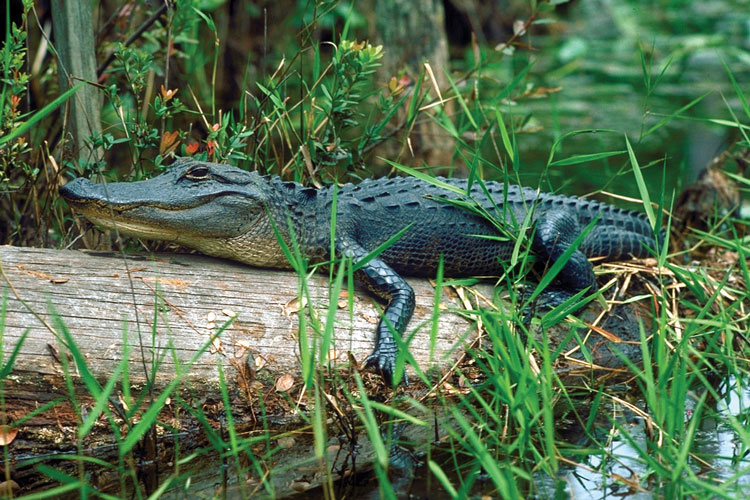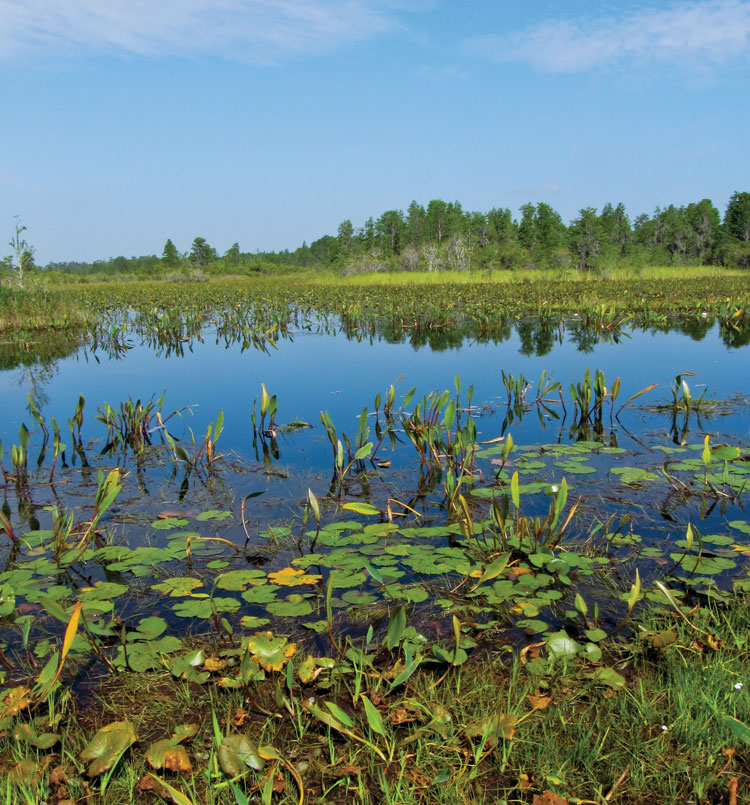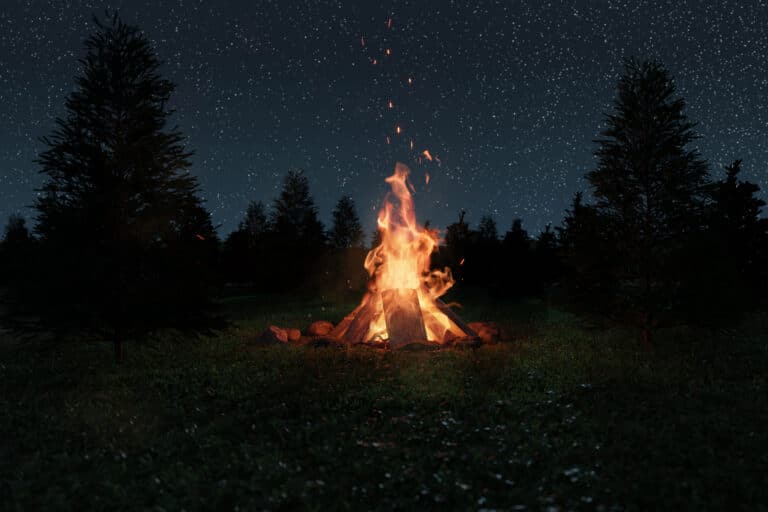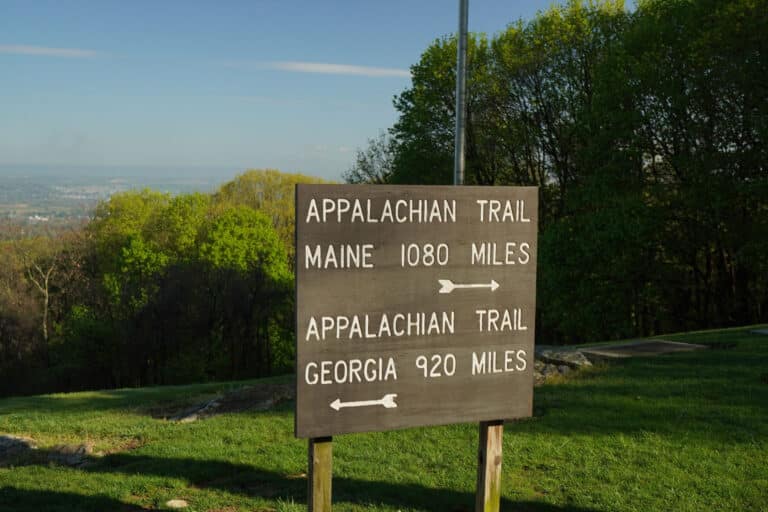Paddling into the alligator-infested Okefenokee—the Wildest Spot in the East

Paddling through darkness in the largest swamp in North America has never been on my bucket list, nor has being lost in such a place, so I paddle harder and urge on my wife Angela as we approach dusk on the ten-mile trip to Floyd’s Island, where a primitive cabin and dry land await. It’s January, and darkness here at the darkest place in the eastern US is going to be, well, dark. That’s part of the attraction of the place. I had not considered that high water would make the trip more difficult, as I had not considered high water at all, but here we are, pushing through a narrow canoe trail with our heads and paddles tangling with overhanging branches and darkness coming on. “We have to be close!” I tell Angela, who of course has been on enough trips with me to never believe such a statement. She makes no comment, as she might ordinarily, and likely senses my anxiety. This is a digital detox, so we have nothing but our Nat Geo map and our arms to carry us on.
After another half hour, the trail comes to an abrupt dead end on terra firma – the solid reliable earth of Floyd’s Island, where hundreds of loggers once stayed during the early twentieth century harvesting the old growth cypress and pines, shipping them out on the numerous rail lines which by then crisscrossed the swamp. It feels good, standing on solid ground after almost seven hours in a boat, but we’re wet, and the temperature is dropping, so we quickly unpack the boats and head towards the cabin. I’ve got fire starter, and some kind soul has left a neat stack of dry firewood, so we soon have a raging fire that we stand before, basking as we dry our socks and clothing. But for the crackling of the wood and a half dozen barred owls sounding off in the blackness, there is utter stillness and silence.
It’s hard not to imagine ghosts in such a place, and the numerous journal entries in the cabin’s notebook often reinforce this. We lie in the dark on a cold floor with the fire crackling and mice racing around the cabin’s drafty edges. Angela’s mother passed away a few months before this trip. The emptiness of the place breaks her apart and she weeps deeply for the first time since her passing. Owls, coyotes, mice, bobcats, and whatever else there is out there rustling in the woods becomes the backdrop to our dreams.
The swamp has a storied history. Seminoles and other Native Americans lived in the swamp for centuries. In 1837, Georgia militia leader Charles Rinaldo Floyd burned the last Seminole village here in the Okefenokee to the ground. From this point on, the swamp was logged extensively, and the expansive longleaf pine forest in and around it were reduced to stumps. In 1900 the Georgia Legislature sold the 700-square-mile wetland to the Suwanee Canal Company, which tried to drain the swamp before abandoning the idea after years of failed attempts.
Franklin D. Roosevelt declared the Okefenokee a National Wildlife Refuge in 1937, but industrial America did not abandon its efforts to exploit the area. In the mid-1990s, DuPont Corporation attempted to mine titanium in almost 40,000 acres adjacent to the swamp. Conservationists resisted the attempt mightily, and as opposition grew, DuPont walked away from the project, accepting a $90 million-dollar buyout. The swamp was protected, and local governments got a chunk of the money to offset the lost tax revenue.
The next morning near the canoe launch, Angela almost steps on a small copperhead coiled up in the cold. Its colors are spectacular, and we study it for several minutes before paddling into the glassy black waters of the Suwanee river’s west fork. Recent heavy rains have washed tons of logs into the water. At the water-lily-choked expanse of Chase Prairie, we lose the trail, but have plenty of daylight left to wander. The abundant ibises, herons, wood storks, and egrets are indifferent, and I cannot help but admire this. We at last find a solitary marker and paddle on toward the canal through the stunning beauty of moss-laden bald cypress and late afternoon sunlight that splashes across the hammocks.
When we reach the shelter at Canal Run, it’s another evening of a warm fire and vast solitude. We have not seen another person in two days and consider ourselves king and queen of the universe under this brilliant starlit sky.
We are now on the east fork of the Suwanee, made famous by the American composer Stephen Foster, who never saw the river once in his entire life. The river is slow here, but there is a current, and paddling is much easier the next day. We relax on this eight-mile day and enjoy the sunshine – and so do the swamp’s most iconic resident, alligators. We see four that afternoon. One gator is ten feet long and so lifeless on this winter morning as it basks that it could be a statue.
We take our time paddling, enjoying the sunning gators and the hundreds of turkey vultures that are parked in the cypresses along the Suwanee’s main stem.
During our three days in the swamp, we saw only two fishermen at Billy’s Island, who arrived in a motorboat as we lunched on the island’s small dock. A large percentage of the swamp was federally designated as a Wilderness area in 1974, meaning no motors or mechanized equipment, but in the acreage at Stephen Foster State Park, motorboats are allowed and can be rented at the park, as well as canoes and kayaks. But that’s it. We see no one else. The Okefenokee is the wildest spot in the East, the darkest spot on the map, and certainly one of the best places in the country for solitude and a sky full of stars.







